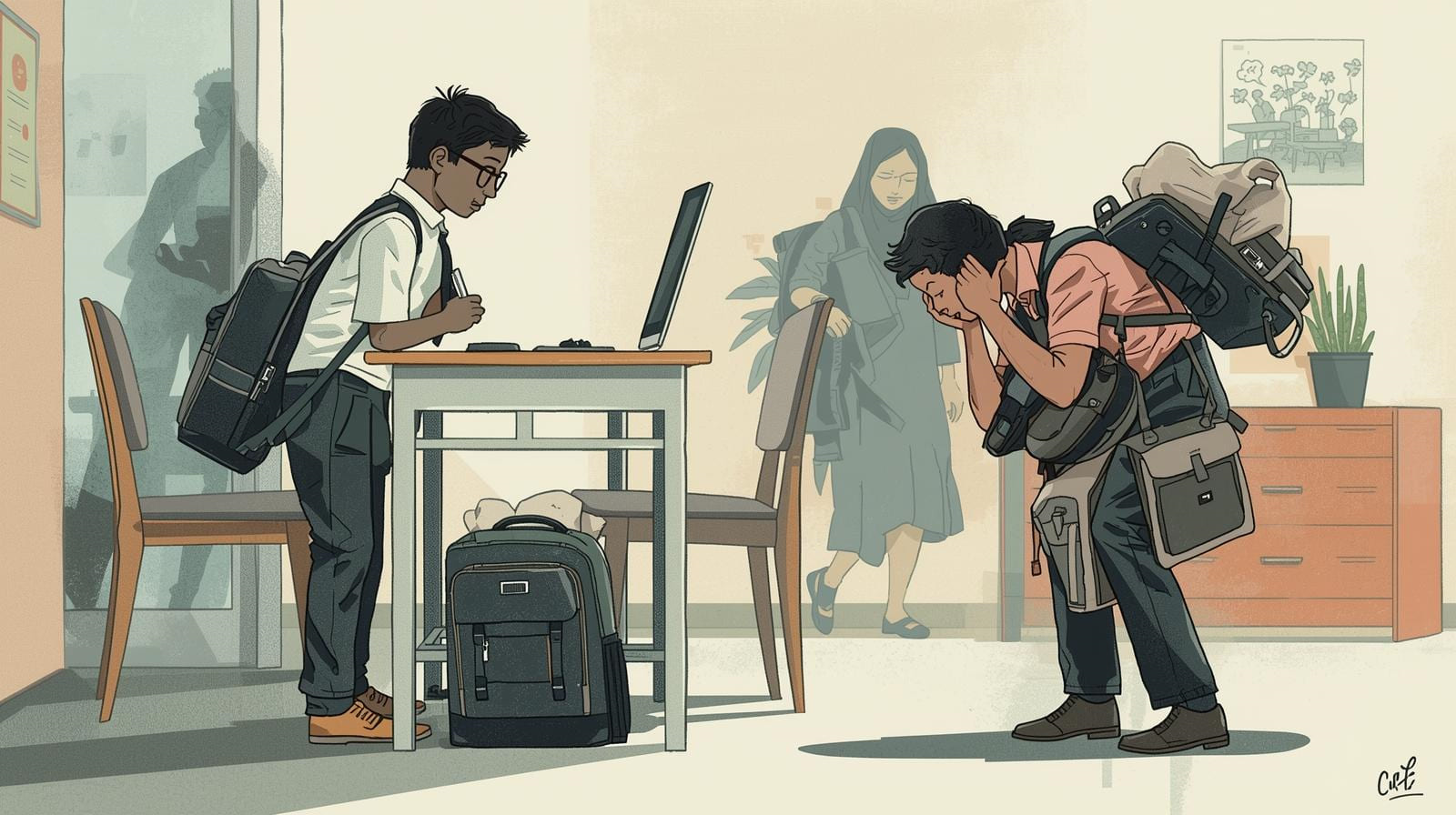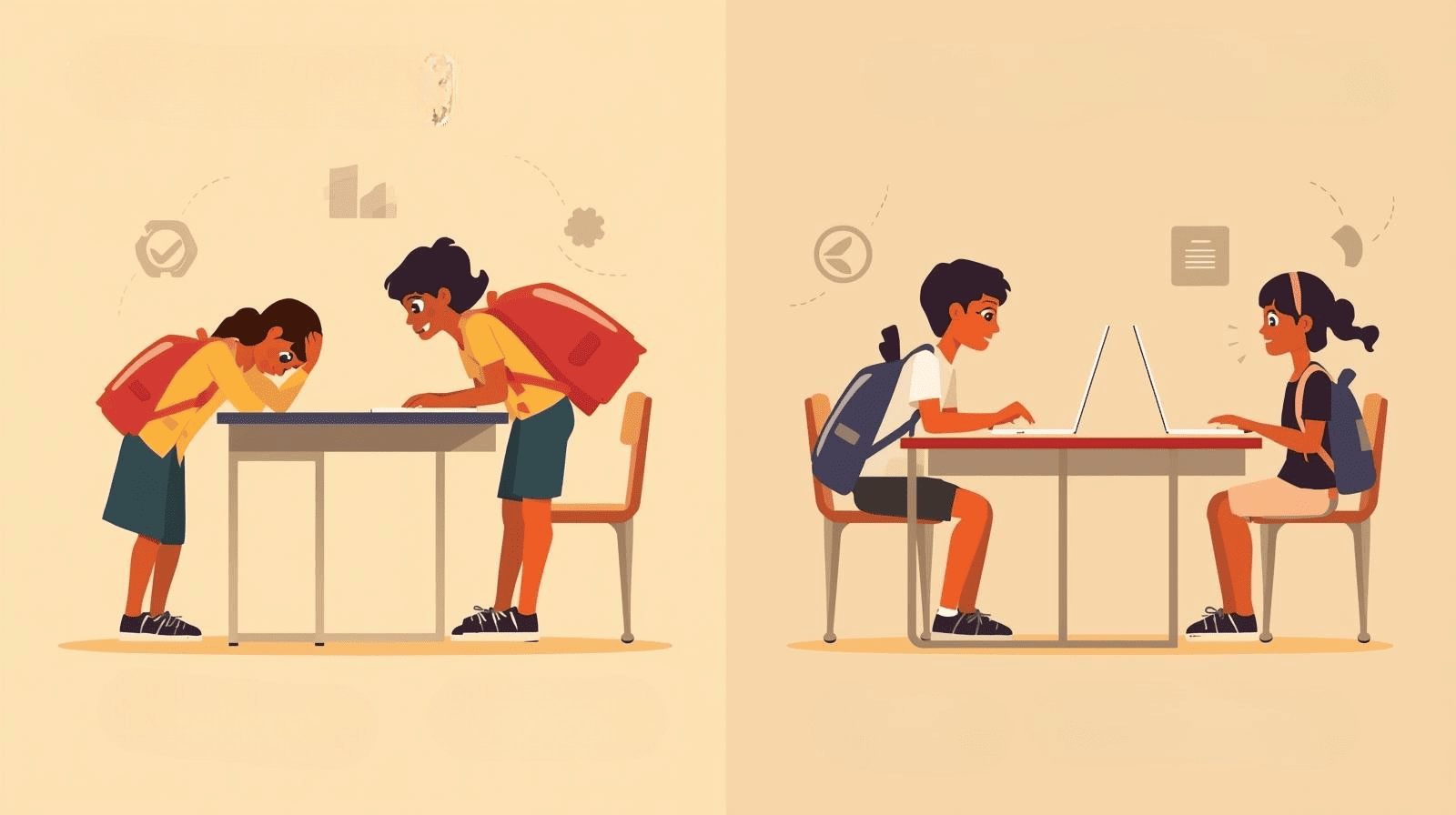
 by Admin
by Admin
 27 Aug, 2025
27 Aug, 2025
From Stiff Necks to Back Pain: The Ergonomic Crisis Facing Indian Students
A growing number of Indian students are facing health problems that go far beyond “just a backache.” These are musculoskeletal disorders (MSDs) and digital eye strain (DES)—conditions directly linked to the way children sit, study, carry their bags, and use screens every day.
This isn’t only a health issue. Constant pain and discomfort affect focus, reduce concentration, and can even harm academic performance. Left unchecked, these problems in childhood often lead to lifelong chronic pain.
Musculoskeletal Disorders (MSDs) in Students
MSDs affect muscles, bones, and joints. Among children, this often shows up as regular pain, stiffness, or dull aches. Studies in India highlight the scale of the problem:
- High prevalence: 1,194 cases per 100,000 children aged 5–19.
- Widespread pain: More than half of students in Pune and Bhopal report musculoskeletal pain; in Chennai, it’s as high as 65%.
- Pain points: Upper back (40%), neck (27%), and shoulders (20%)—most often linked to heavy school bags.
- What’s most worrying is that discomfort starting as early as 7 years old is a proven risk factor for chronic pain in adulthood.
Digital Eye Strain (DES) in Students
With online classes and increased screen exposure, DES—also known as Computer Vision Syndrome—has become a major health issue for children.
- Visual strain: Blurred vision, tired eyes, dryness, and headaches are now common among students.
- Physical strain: Long hours on devices without proper posture also trigger neck and shoulder pain.
- Rising myopia: Daily screen time is strongly linked to the increasing rates of nearsightedness in children.
The COVID-19 pandemic accelerated this problem, as online classes forced students into prolonged screen use, intensifying both MSD and DES symptoms.
Why This Matters
These issues are not minor irritations. Pain, stiffness, and eye strain directly affect a child’s ability to concentrate, absorb lessons, and perform academically. Studies have shown that poor ergonomics not only harm health but also lower school performance.
Protecting students from these risks isn’t just about avoiding discomfort—it’s about ensuring they can learn effectively today without carrying health problems into tomorrow.
Disclaimer
This article is for public information and awareness purposes only. The facts presented are based on widely accepted ergonomic guidelines and findings from health studies in India. If a child experiences persistent pain, vision problems, or discomfort, please consult a qualified medical professional for proper diagnosis and treatment.
Search
Recent Post

 16 Oct, 2025
16 Oct, 2025
Corporate Wellness: The New Workplace Priority

 12 Oct, 2025
12 Oct, 2025
What’s Really Inside Your Food Packet?

 02 Jul, 2025
02 Jul, 2025
Is Your Air & Water Making You Sick?

 14 Jun, 2025
14 Jun, 2025
















